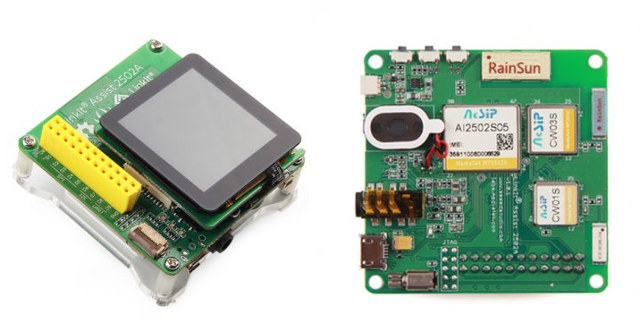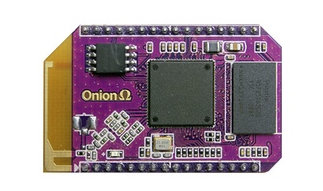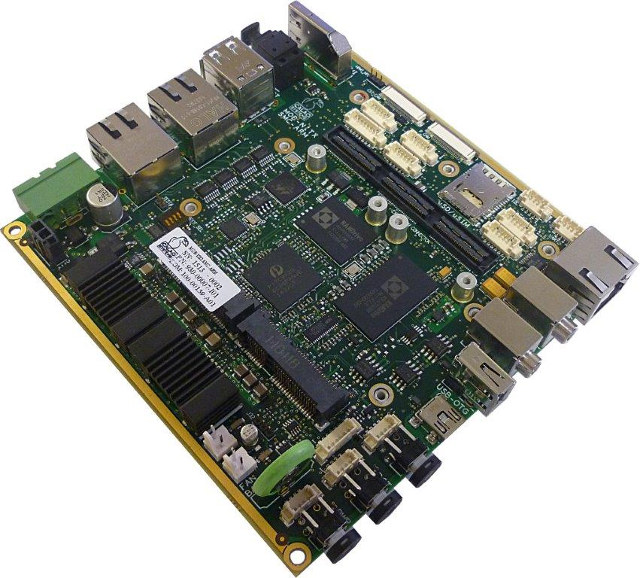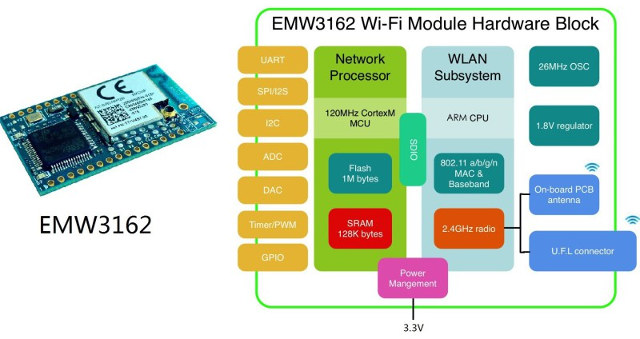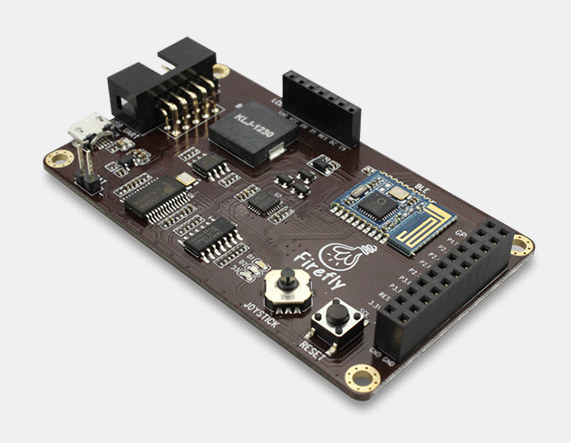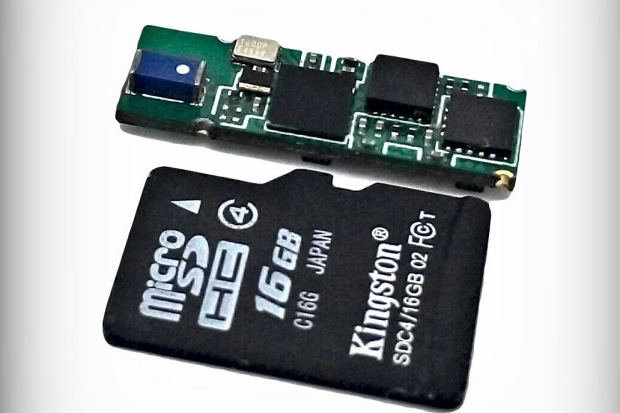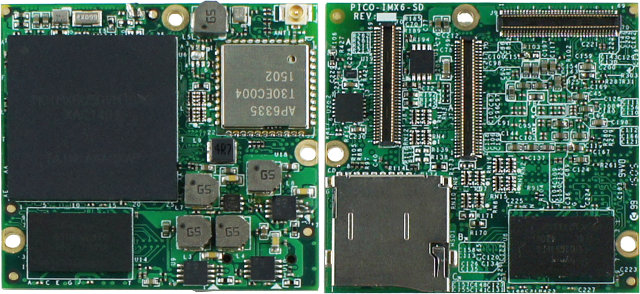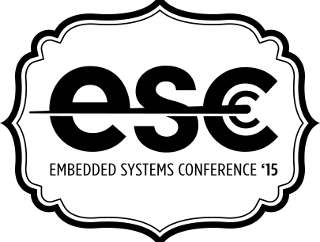After LinkIt ONE, Mediatek Labs has introduced a new IoT development kit based on their Aster M2502 ARM7 processor with LinkIt Assist 2502 comprised of AcSiP MT2502A IoT SiP Core module, a 802.11b/g/n module, a GNSS module, and an exchangeable 240×240 16-bit color capacitive touch LCM Board. The AcSiP module can also be purchased separately, so you could use LinkIt Assist 2502 board for early development, because moving to your custom hardware based on AcSiP MT2502A module. LinkIt Assist 2502A specifications: MCU – AcSiP AI2502S05 module with MT2502A (Aster) ARM7 EJ-STM processor @ 260MHz, 4MB RAM, 16MB flash Display – 240×240 LCD module; 16-bit color depth; transflective; based on ST7789S driver IC. Connectivity Wi-Fi 802.11 b/g/n via AcSiP CW01S module based on MT5931 SoC Bluetooth 2.1 SPP and 4.0 GATT dual mode (part of MT2502A) GPS via AcSiP CW03S module based on MT3332 chip supporting GPS, GLONASS, and BeiDou. GSM […]
Onion Omega is an Atheros AR9331 Wi-Fi Module Supporting Various Docks and Add-on Boards (Crowdfunding)
There are so many inexpensive Wi-Fi modules running Linux that it would be easy to discard Onion Omega as yet another Wi-Fi module based on Atheros AR9331 WiSoC. However, the developers have tried to bring some added value by making programming easier for web developers, integrating it with a cloud platform (free for non-commercial use), and providing basicor Arduino dock, and add-on boards for Ethernet, OLED, Relay… to make building hardware projects easier too. Let’s go through the hardware first, starting with the module specifications: SoC – Atheros AR9331 400MHZ MIPS 24K System Memory – 64MB DDR2 400MHz Storage – 16MB Flash Connectivity – 10/100 Mbps Ethernet + 802.11b/g/n Wi-Fi up to 150Mbps with PCB antenna w/ uFL connector I/Os – 18 GPIOs USB – 1x USB 2.0 Power Supply – 3.3V; Typ. consumption: 0.6W Dimensions – 28.2mm x 52mm (1.1″ x 2.0″) Since this type of module is not […]
Baseball Nano-ITX i.MX6 Board Targets Secure Industrial M2M and IoT Products
Calao Systems has introduced a new Freescale i.MX6 single board computer with Baseball embedded platform, targetting network-connected industrial M2M and Internet of Things (IoT) applications requiring a high-level of security achieved with an FIPS 140-2 trusted platform module, and Crypto Authentication chip. The board is comprised of a Nano-ITX based board and a Freescale.iMX6 (Solo, Dual or Quad) SMARC 1.1 module with the following combined specifications: SoC – Freescale iMX6 Solo, Dual or Quad Cortex A9 processor @ up to 1GHz with Vivante GPU System Memory – 2 GB DDR3L, Storage On Module: 8 GB e-MMC, 8 MB SPI Flash, 1x EEPROM with unique S/N and MAC address On Baseboard: 1x Micro-SD socket, 1x Industrial Grade eMMC NANDrive (optional), 1x Industrial Grade SATA Nandrive (optional), Video Output – HDMI Audio Output – HDMI and optical S/PDIF Connectivity – 2x Gigabit Ethernet, 1x SIM card slot USB – 3x USB 2.0 […]
MXCHIP EMW3162 is a $10 Low Power Wi-Fi Module for IoT Applications
You can’t beat ESP8266 Wi-Fi modules on price to add Wi-Fi to your IoT projects, but Hackaday found a new Wi-Fi module by Shanghai MXCHIP Information Technology that sells for $10 on Seeed Studio or Amazon US, that should be better suited to battery operated project thanks to a lower power consumption. EMW3162 also features a more powerful STM32F205 cortex M3 micro-controller, as well as more I/Os than ESP8266. Specifications for EMW3162 Wi-Fi module: MCU – STM32F2 Cortex M3 MCU @ 120 MHz with 128KB RAM, 1MB flashOn Wi-Fi connectivity 802.11b, 802.11g, 802.11n (single stream) on channel 1-14 @ 2.4GHz WEP, WPA/WPA2 PSK/Enterprise (hardware encryption) Transmit power: 18.5dBm@11b; 15.5dBm@11g; 14.5dBm@11n MIN Receiver Sensitivity: -96 dBm Max Data rate: 11Mbps@11b; 54Mbps@11g; 72Mbps@11n HT20 Wi-Fi modes: Station, Soft AP and Wi-Fi direct Advanced 1×1 802.11n features: Full/Half Guard Interval, Frame Aggregation, Space Time Block Coding (STBC), Low Density Parity Check (LDPC) Encoding […]
Firefly introduces FireBLE Bluetooth Low Energy Board
So just as today I wrote about XBAND BLE Sensor board, the makers of Firefly-RK3288 also announced their own Bluetooth Low Energy board aptly named FireBLE, and also integrating a 6-axis gyroscope and accelerometer, but instead of being based on Nordic or Cypress, the company went with an NXP BLE chip. FireBLE board specifications: SoC – NXP QN9021 ARM Cortex M0 MCU @ 32MHz with 94KB ROM (protocol stack), 64 KB SRAM, 128KB flash Bluetooth – BT 4.0 single mode. Central and peripheral mode with up to 8 simultaneous connections. Sensors MPU-6050 3-axis gyroscope and 3-axis accelerometer with an on-board Digital Motion Processor (DMP) capable of processing 9-axis motion fusion algorithms. Battery and temperature sensor USB – micro USB port for power and programming Expansion – 3 expansion headers with access to SPI, UART, I2C, GPIO, and PWM, as well as OLED display interface. Debugging – JTAG, support SWD online […]
XBAND is a Tiny $10 Bluetooth Low Energy Sensor Module (Crowdfunding)
ZX Tek‘s XBAND is a board about half the size of a micro SD that comes with a Bluetooth LE radio and a 6-axis MPU6500 motion sensor that can be integrated into wearables and IoT applications such as a remote controlled robot with a camera., a wireless smart light-bulb, and iBeacon device and so on. There seems to be two versions of the module XBAND 061-N51822 and XBAND 1018-CY8C4247 with the following specifications: SoC (one or the other) Nordic Semiconductor nRF51822 ARM Cortex M0 MCU @ 16 MHz with 256KB Flash, 16KB RAM, and Bluetooth Low Energy support Cypress PSoC4 BLE core ARM Cortex M0 MCU @ 48 MHz with 128KB flash, 16KB RAM, and Bleutooth Low Energy support Bluetooth – 4.0/4.1 with high gain ceramic chip antenna Sensors – On-board 6-axis MPU6500 motion sensor + an extra configurable sensor (not idea what that is…). Connectors – Board-to-board connectors with […]
TechNexion Introduces Intel Edison Compatible PICO-iMX6 SoM and DWARF Board
Intel Edison is a board made for wearables featuring an SoC with Intel Atom and Quark CPU cores. TechNexion, an embedded systems company based in Taiwan, has decided to make a mechanically and electrically compatible system-on-module featuring Frescale i.MX6 Solo or Duallite ARM Cortex A9 processor called PICO-iMX6. The company is also providing a PICO-DWARF baseboard that’s both compatible with PICO-iMX6 SoM and Edison board. DWARF stands for “Drones, Wearables, Appliances, Robotics and Fun”, so that pretty much explains what the platform is for. PICO-iMX6 System-on-Module Two version of the modules are available: PICO-iMX6-SD and PICO-iMX6-EMMC, the former with a micro SD slot for storage, and the latter a 4GB eMMC. Both share the followings specifications: SoC – Freescale i.MX6 Solo / Duallite single/dual core ARM Cortex A9 @ 1Ghz with Vivante GC880 3D GPU and Vivante GC320 2D GPU (Composition) System Memory – 512MB or 1GB DDR3 Storage – […]
Embedded Systems Conference 2015 Schedule – May 6-7, 2015
The Embedded Systems Conference took the name “Design West” for a couple of years, but this year, there’s no mention of Design West, and the Embedded System Conference 2015 will take place in Boston, MA, US on May 6-7, 2015. The 2-day event will have a demo hall, and well as sessions divided into 8 tracks: Connected Devices and the IoT Embedded Software Design Hardware: Design, I/O and Interfacing Prototyping Embedded Systems Design Software: Design, Languages, & Quality Fantastical Theater Teardowns The full schedule has now been posted, and I’ll build a virtual schedule with some of the sessions provided. Wednesday May 6, 2015 8:00 – 8:45 – Understanding Google/Nest Thread by Michael Anderson, Chief Scientist, The PTR Group, Inc. The IoT will live or die based on its connectivity. In examining existing wireless protocols, Google/Nest found most of them lacking. In order to address the needs for low-power wireless […]


